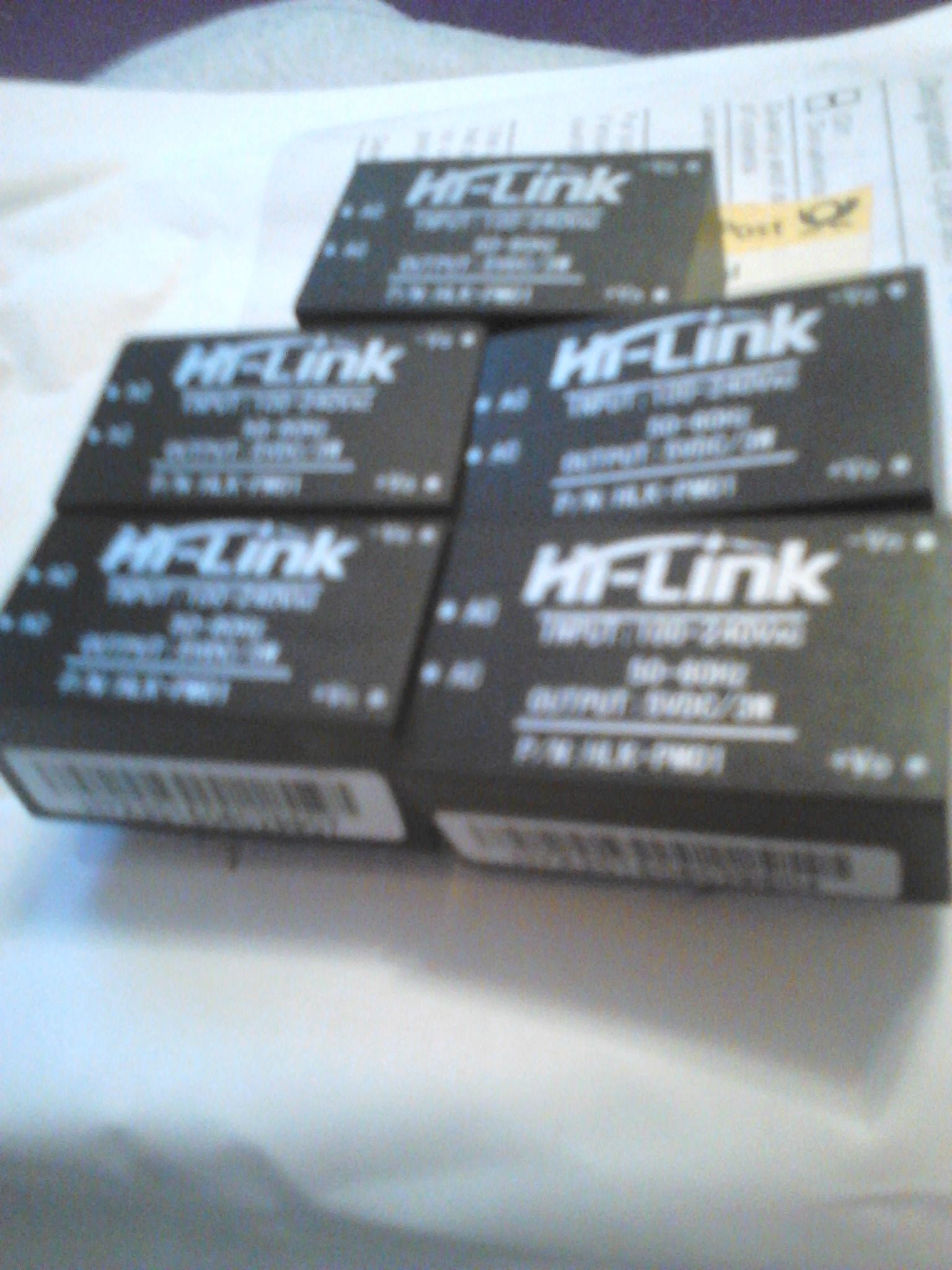Safe In-Wall AC to DC Transformers??
-
I got some hi-link modules a while back on a "I might need these in the future" type deal.
I was wondering though how to protect the connections. I got some fuses+pcb holders to add extra protection however there is going to be at least 4 points which will be exposed.
Can I just cover the joints with hot glue to stop them from making contact with anything? Call me paranoid but I like to be extra safe.
-
I got some hi-link modules a while back on a "I might need these in the future" type deal.
I was wondering though how to protect the connections. I got some fuses+pcb holders to add extra protection however there is going to be at least 4 points which will be exposed.
Can I just cover the joints with hot glue to stop them from making contact with anything? Call me paranoid but I like to be extra safe.
@Qu3Uk For covering solder connections you can use 'heatshrink'. Kind of 'plastic' tubes that you put around a wire, apply heat (keep a lighter/match underneath (not in the flame) for example) and it shrinks around the connection.
-
I got some hi-link modules a while back on a "I might need these in the future" type deal.
I was wondering though how to protect the connections. I got some fuses+pcb holders to add extra protection however there is going to be at least 4 points which will be exposed.
Can I just cover the joints with hot glue to stop them from making contact with anything? Call me paranoid but I like to be extra safe.
@Qu3Uk You could protect the high voltage part of the circuit by mounting a plastic plate under the pcb using some spacers and screws. This way it would be impossible to touch the dangerous spots. I would not recommend hot glue because you never know how well it isolates. I don't think you will find electrical specs for hot glue. ;)
-
@Qu3Uk You could protect the high voltage part of the circuit by mounting a plastic plate under the pcb using some spacers and screws. This way it would be impossible to touch the dangerous spots. I would not recommend hot glue because you never know how well it isolates. I don't think you will find electrical specs for hot glue. ;)
@Jan-Gatzke Ah yeah that's probably a neater option as well I think. Sure I can find something suitable like that.
I have heatshrink but I just figured it wouldn't 100% cover the solder joints on the PCB. -
@Jan-Gatzke Ah yeah that's probably a neater option as well I think. Sure I can find something suitable like that.
I have heatshrink but I just figured it wouldn't 100% cover the solder joints on the PCB.@Qu3Uk there is something called liquid tape. It's expensive.... Cool stuff though
-
@Moshe Livne. thank you for the trick. I didn't know this. it could be very useful sometimes.
-
@Jan-Gatzke Ah yeah that's probably a neater option as well I think. Sure I can find something suitable like that.
I have heatshrink but I just figured it wouldn't 100% cover the solder joints on the PCB.@Qu3Uk Also, worse comes to worse, use PU construction adhesive. very messy but they are rated for electrical conductivity and fire. if you ever want to take this off, you are in big trouble....
-
@Qu3Uk , is a small plastic box a option? Maybe some 3D-printed, with some ventilation holes on two sides, as small as the PCB + components?
@rvendrame Waiting on some boxes but I'm also wanting to protect the connections inside the box, figure it'll also be a little neater maybe.
-
@Didi Any initial results? curiosity is killing me....
-
@Didi Any initial results? curiosity is killing me....
-
@Moshe-Livne said:
@Didi Any initial results? curiosity is killing me....
Sorry Moshe no tests,i was in holidays with my kids
@Didi :disappointed:
-
Last week I carried out an elektrical safety test on the HLK-PM01 to NEN 60101 (Dutch test for medical equipment) and it performed pretty well. I will try to post the file, after I removed some private information :-)
Furthermore I am building a automated load tester that relates variable loads to output voltages and surface temperatures, based on an Arduino Nano. -
Last week I carried out an elektrical safety test on the HLK-PM01 to NEN 60101 (Dutch test for medical equipment) and it performed pretty well. I will try to post the file, after I removed some private information :-)
Furthermore I am building a automated load tester that relates variable loads to output voltages and surface temperatures, based on an Arduino Nano. -
Last week I carried out an elektrical safety test on the HLK-PM01 to NEN 60101 (Dutch test for medical equipment) and it performed pretty well. I will try to post the file, after I removed some private information :-)
Furthermore I am building a automated load tester that relates variable loads to output voltages and surface temperatures, based on an Arduino Nano. -
Maybe the "Samsung ETAOU10EBE" phone charger is also an idea to use. I have one for my phone, and it is very small.
I haven't opened it (i use it for my phone, dohhh), but the charger is small, so the PCB inside will be even smaller.It is 5V @ 700mA with a microUSB wire. I got a second one from eBay, which was being sold as 'genuine'. And to be honest, i really don't see any difference with the one that came with my phone. It is working fine for more than a year.
-
Well, here is the test file. I made it using test software named Ansur and a Fluke ESA640 tester in a Class II test setup.
The only problem is that some test results are in Dutch.

